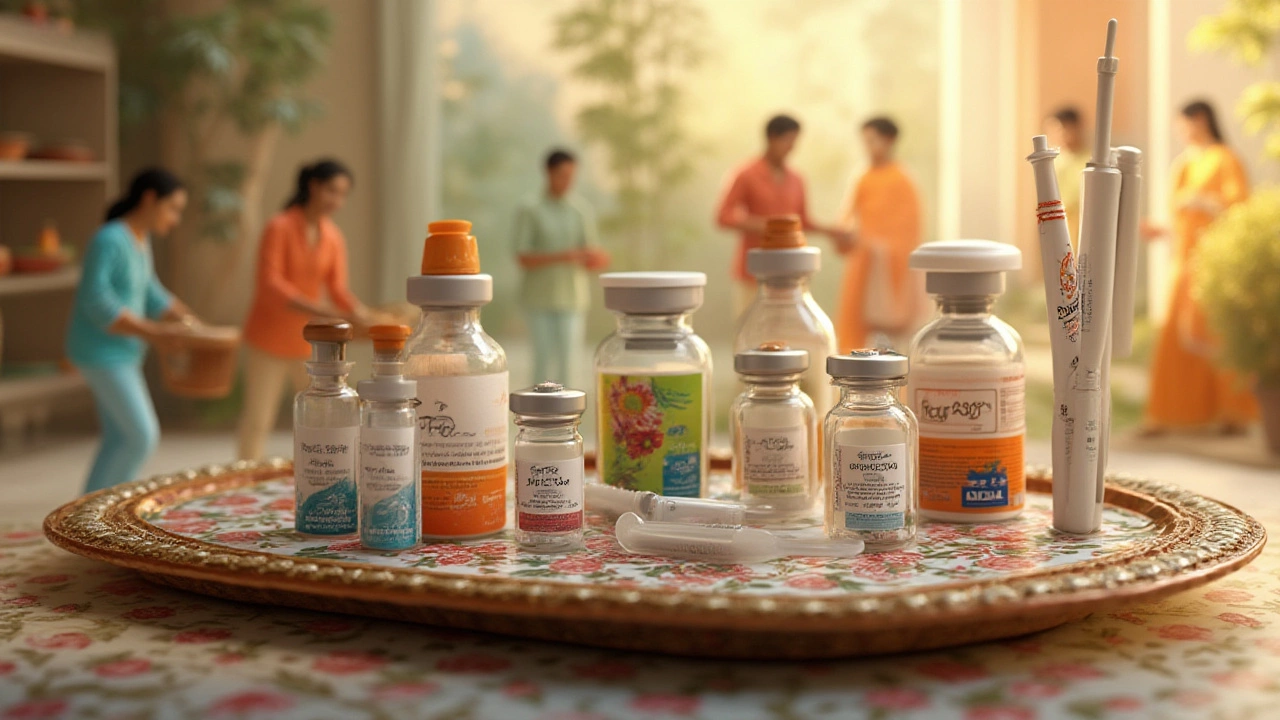-
10

Breakthrough Diabetes Treatments in 2025: What You Need to Know
Imagine sticking a finger for a blood sugar check and hearing a nurse say, “You might not need to do this much longer.” That’s not just wishful thinking this year. In 2025, the entire game of diabetes care is changing fast—with science making life a lot less stressful for the 537 million people managing diabetes worldwide. Major advances aren’t just stuck in research papers; some are landing in clinics and dramatically improving everyday routines for real people.
New Drugs Making Waves
The last few years flipped the script with GLP-1 receptor agonists—yes, the same class as semaglutide (Ozempic, Wegovy) that shook up both diabetes and weight loss. But 2025’s big talk? A new version called "Cagrilintide"—a combination injectable that tackles both GLP-1 and another hormone, amylin. Early trial data shows patients slashed A1c levels by up to 2% and lost a whopping 12% body weight on average in six months. Add in improved hunger control, less brain fog, and easier blood pressure numbers, and it’s clear this isn’t your old-school insulin pen.
Here’s where it gets wild: dual GIP/GLP-1 agonists like tirzepatide (brand name Mounjaro) are turning out to be even more powerful. Trials published in "The Lancet” last year saw over 50% of users hitting non-diabetic A1c levels, something docs considered practically impossible with pills before. They’re once-a-week shots, so say goodbye to daily syringes for some.
A fun fact: A study funded by the ADA found that people using these newer therapies were 40% less likely to need insulin in the first year of diagnosis. The stress relief is massive—less fear about sugar crashes, less anxiety ordering restaurant food, and more room to focus on other goals.
Here’s a quick breakdown comparing old and new:
| Treatment | How Often | Weight Impact | Common Side Effects |
|---|---|---|---|
| Insulin | Daily, Multiple Times | Often Gain Weight | Low blood sugar, injection site pain |
| GLP-1 Agonists | Weekly | Weight Loss | Nausea, GI upset |
| Cagrilintide/Combo Drugs | Weekly | Significant Weight Loss | Mild GI issues (usually fade) |
Doctors are excited, but there’s more: combination pills are on the way, and patches you stick on your arm could be next, possibly as soon as 2026.
Is a Diabetes Cure Finally Here?
People have been hearing tall tales about a "diabetes cure" for decades, so it’s no wonder the buzz around cell therapies drew some eye-rolls at first. But in 2025, we’re looking at something concrete. Several biotech companies, like Vertex Pharmaceuticals, have published data showing that a single IV infusion of lab-grown beta cells (the ones that make insulin in the pancreas) can restore normal insulin production for at least 12 months in some Type 1 diabetes patients.
Just to be clear, it doesn’t work for everyone just yet—some people’s immune systems still wipe out the new cells, so light immune-suppression is needed. But for a group of trial participants, their blood sugar levels stayed nearly perfect without insulin injections for the whole year. One participant shared, “For the first time since I was 11, I forgot I had diabetes for a day.” That kind of freedom? Incredible.
In Type 2 diabetes, researchers are experimenting with gene-editing treatments—using tools like CRISPR to tweak liver and pancreas cells so they work like they used to. So far, the studies are smaller, but one published in "Nature Medicine" showed that after gene-editing, up to 30% of patients could come off their diabetes meds for at least six months.
These aren’t science fiction. Hospitals in the U.S., U.K., and India are running cell therapy trials, and big diabetes centers are opening up pilot programs. Getting into a trial isn’t always easy, but websites like ClinicalTrials.gov can help people check if they’re eligible. Even for those who aren’t ready to try new therapies, hearing about these breakthroughs brings hope—and a push to ask their doctor, “What’s next for me?”

Tech and Lifestyle: Smarter, Easier, Better
If you thought diabetes care was just about shots and pills, 2025 has a few surprises. Continuous glucose monitors (CGMs) are now tiny, skin-colored patches you stick to your arm for two weeks straight—no more juggling test strips. The latest Dexcom G7, for example, gives you blood sugar readouts on your phone and buzzes your watch when you trend high or low. Even parents can monitor their kids from another room.
One cool tip for travelers: the FreeStyle Libre 4 now stores up to 14 days of data, even when you’re off-grid or on an airplane. That means adventure doesn’t stop for diabetes management. Smartwatches like the Apple Watch Ultra 2 can now pair with CGMs and remind you to walk or hydrate after a meal, making those healthy habits a lot less pesky.
Food tracking apps, once a pain to use, now use AI to guess carb counts from a photo—just snap, confirm, done. Gym equipment at newer facilities even syncs with your diabetes management app, adjusting cardio and setting reminders to check sugar if you’re running longer than usual.
Here’s a cheat-sheet to snag the right tech:
- CGM (Dexcom or Libre) for real-time numbers and hypo alerts
- Apple Watch or Fitbit with CGM link-up for reminders
- Smart insulin pens that log each dose
- AI-powered food trackers for fast, accurate carb calculations
Don’t sleep on basics, either: walking even 20 minutes after a meal can lower sugar spikes—something backed up by a Cornell study in 2023. And meal prepping with higher fiber and more protein? That’s still gold. Even with new treatments, these little habits play huge roles in cutting your risk for diabetes complications.
Looking Ahead: What’s Next for Diabetes Treatment?
This summer saw the FDA greenlight a new oral semaglutide for Type 1 diabetes—a first ever, and it comes in a tiny pill, not a shot. Doctors in Europe are already seeing fewer hospital trips for severe hypoglycemia just six months after patients switch. Personalized medicine is the next frontier: genetic tests, available at major lab centers, are starting to predict which drugs you’ll respond to best. Imagine your doctor pulling up your gene chart and instantly knowing if a GLP-1 or insulin will work bets. Sounds like sci-fi? That’s 2025 for you.
Treatments are expanding, but access is the real issue for many. Drug companies say they’re working with insurance providers to lower costs—one pharma announced a low-cost version of semaglutide expected to debut in India late this year. Apps helping patients manage costs, compare pharmacy prices, and join support trials are gaining popularity too. Nobody deserves to skip great care because they can’t afford it.
Tips to get the most from 2025’s diabetes breakthroughs:
- Ask your doctor about new options—even if you’re happy with your old plan
- Enroll in patient support programs (sometimes you get free CGMs or discounts!)
- Stay curious: sign up for trusted research newsletters to catch early trial news
- Join online communities—people share hacks and firsthand tips you won’t hear in clinics
If there’s one thing to remember, diabetes isn’t a dead-end diagnosis anymore. Science keeps surprising us with new ways to *control* or even fix the root cause. Each year, hope gets stronger—and for the first time in decades, it feels deserved.